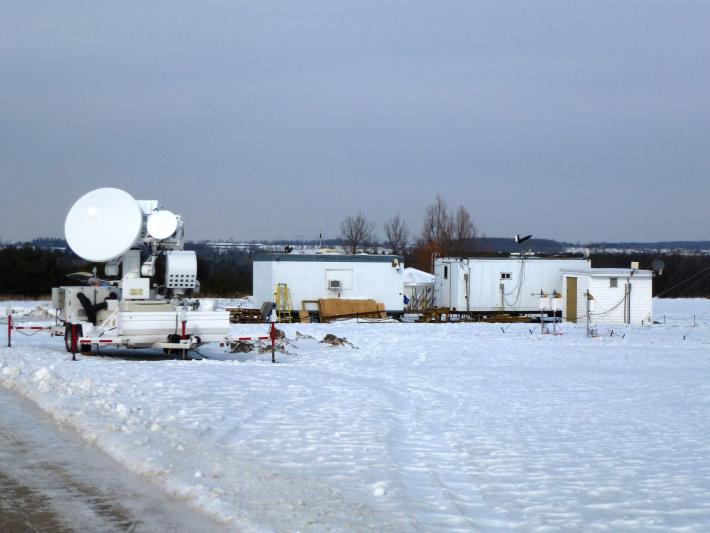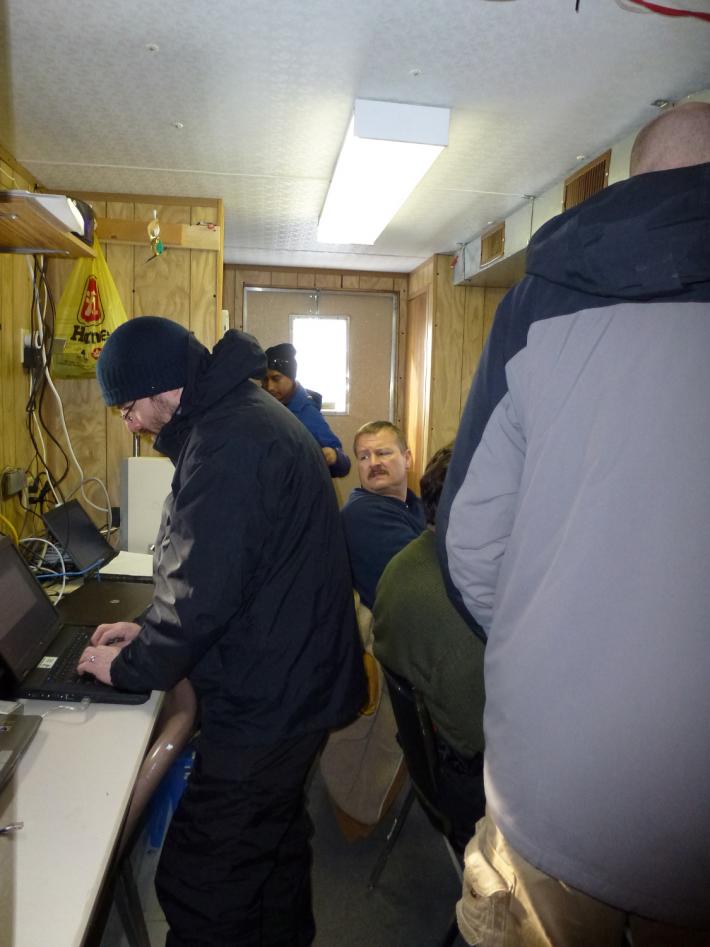Day 2: Planning for Snow
Ben Johnson is a scientist at Goddard Space Flight Center who specializes in remote sensing of snow. This week he is at the CARE site in Ontario as one of the mission scientists for the GCPEx ground validation.
Tuesday night we had a good snowfall after having rain for most of the day. About 5-10 cm of snow fell in a very short amount of time. We were able to get some good measurements from the ground equipment, some of which is shown in the pictures. Also, the NASA DC-8 aircraft arrived in Bangor Maine, and the University of North Dakota Citation aircraft arrived in Muskoka, Ontario.
Our daily routine consists of waking up around 7 am and having breakfast in the hotel. This is followed by a small planning meeting where the mission scientists, Walt Petersen and I, along with the forecaster Kim Reed and operation scientist, Mark Kulie, look closely at the weather forecasts for the day and decide whether or not the aircraft will fly -- this decision depends primarily on what kind of weather is forecast for the mission area. If it looks like there is going to be a nice snow event, we will tell the aircraft crew when and where to fly in order to get a really good snow measurement.
Thursday is our first flight day -- everyone is excited. The airplanes will take off around 8 am local time, and sample the snow clouds until around 11 am. The people on the aircraft are busy with flying, operating the instruments, and ensuring that things are going smoothly. The largest source of error in most field experiments is human error, so we have well-rehearsed procedures for handling the observations, the data, and the analysis -- this ensures that the highest quality of data is available for researchers.
 View of the operations trailer at the GCPEx CARE site with the D3R radar set up nearby.
View of the operations trailer at the GCPEx CARE site with the D3R radar set up nearby.Credit: NASA / Ben Johnson
Some days, when there is no snow in the forecast, we will begin to collect and analyze the data. These are preliminary analyses, since the data requires significant quality control -- no instrument is perfect, and so we have to correct the data for instrument errors, possibly discarding some data that may be too noisy or otherwise inferior.
Looking forward to some cold and snowy days!


